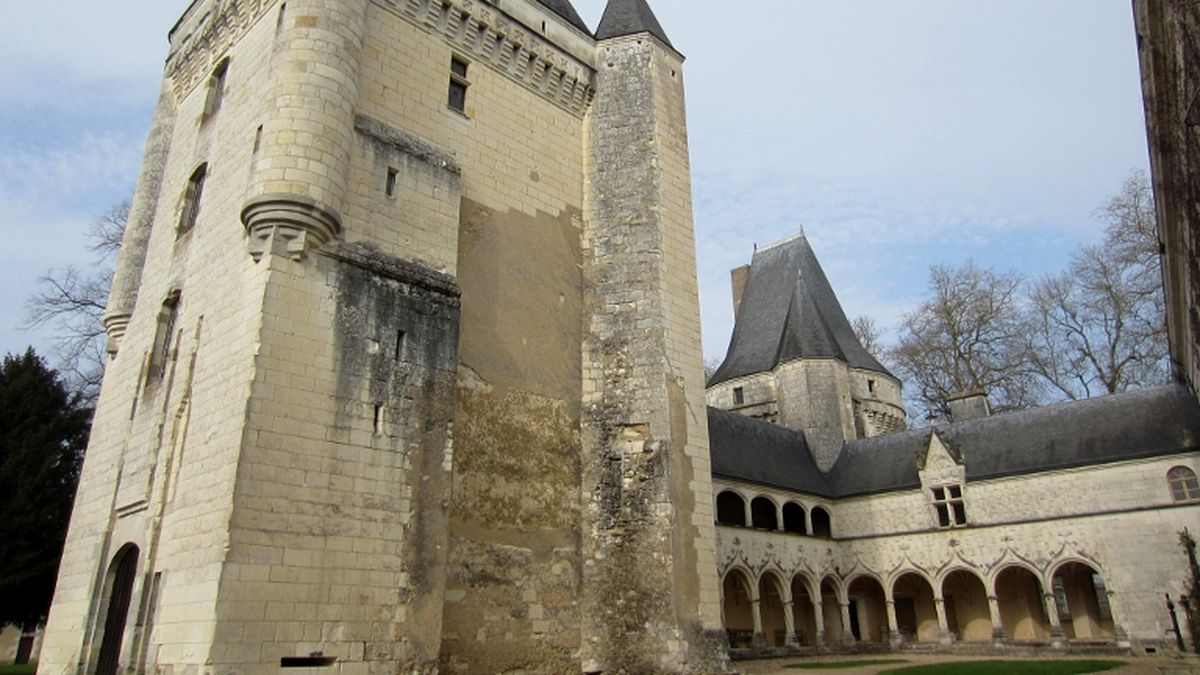 The castle | ©Anecdotrip.com / CC-BY-NC-SA
The castle | ©Anecdotrip.com / CC-BY-NC-SAArgy and the castle
Small lords of Indre
Argy is mentioned since the beginning of the 12th century. At that time, Archambaut d'Argy had just founded Landais abbey (Indre).
The d'Argy were small local lords, who went to the Crusades and were loyal to the king of France.
Then, in the beginning of the 16th century, the Brillac turned up. Father, son and grandson raised the current castle.
Pierre the pater raised the square keep; Charles his son the round tower and the Renaissance gallery. Hey, at that time, the gallery was closed… it had 4 walls!
Italian Renaissance in the Berry
Charles de Brillac was king Louis XI’s butler. In those days, Louis XI lived in Loches, for the most part of his time.
And he didn’t hesitate to call Charles at any time! So, to be entirely available, this last one decided to settle in Argy.
Because Loches was located at one-day walk from Argy! More practical for everyone…
Charles took part in the king’s wars in Italy: he saw all the beautiful palaces, there… ″Whoa, it’s amazing!″ he thought, dreaming.
And when he came back in France, he put up the Renaissance gallery!
Ermines and fleurs-de-lis
Stone initials
Jacques, Charles’ son, added the floor upon the gallery in 1510.
The façade is very richly decorated: we have initials, ermines, fleurs-de-lis and shells.
Lis for the king of France Louis XII; ermines for his wife, Anne of Brittany.
What about the interlaced initials? K for Karolus (Charles); R for Renée, Charles’ daughter; L for Louise de Balzac d'Entraigues, his wife; J for Jacques, Charles’ son.
In the 19th century, the new owners wanted to add their own initials: do you see them on this window, between those two sitting dogs?
A shell for a son?
But it’s not over! What about the shells, with a staff and a beggar’s bag?
Those remind the pilgrimage of St-Jacques of Compostela.
Because Argy was on the road and welcomed pilgrims? Because Charles de Brillac did the pilgrimage?
The tradition says he did it to have a male heir from his second wife… his first wife had died in childbirth just after their wedding, and their daughter was stillborn…
Phew, fortunately, he had a son, he called him… Jacques!
La vie de château
Argy fell to several owners, and in 1828, the newcomer turned up: a former lawyer, Mr. Lamotte!
A rich notable who wanted to be a nobleman… He owned Argy and a title, becoming Monsieur le comte d’Argy!
In 1834, a Belgian firm bought the castle: they wanted to transform it into apartments.
It was a farmer who finally bought Argy. He was interested by the vast plots of lands! He didn’t care about the old castle. So, it began to deteriorate.
In 1960, the Club du Vieux-Manoir owned it for next to nothing. The farmer could keep his lands and even raised a small wall to demarcate his private estate!
The Club, helped by young voluntaries, restored everything: façades, roofs…
Argy was brand new, but a terrible hailstorm hit it, in 1968: hailstones about 1,2 kilos falling on the new roofs, do you imagine??
Today, Argy houses the Club’s seat, who restores buildings throughout France.
The visit of Argy
Curiosities and loggia
On the first floor of the keep, a room houses a ″curiosities study″. Nice objects!
Then, we cross the loggia, above the Renaissance gallery. We have period beams, here. And look!
Gutters on the soil: Renaissance is fine, but here, we’re not in Italy, and the weather is less mild! Rills and sloping soil are here to evacuate the rain water.
Finally, the 19th century’s dwelling: here, the lawyer transformed everything. His house was even wired!
An important first, when we know that the last houses in Berry were wired… in 1970.
Argy’s columbarium
In the barn, don’t miss the reconstitute columbarium from the Archives Nationales in Paris.
Columbarium? Originally, it’s the place where funeral urns are kept.
By a shape analogy, it’s the place in the Archives where they kept maps, rolled in small compartment!
Raised in 1862, the Columbarium of Paris became obsolete and very bulky, at the end of the 20th century.
We had 11 columbariums in the Archives: the one in Argy is the last one, other ones were destroyed!
Staircase, shelving… all is here. You know what? The iron decoration were made by the Eiffel factory, says the tradition!
